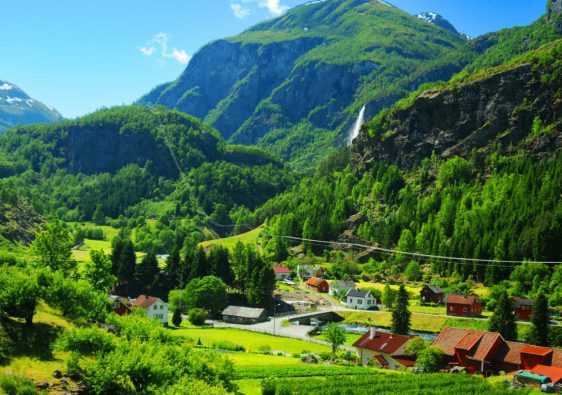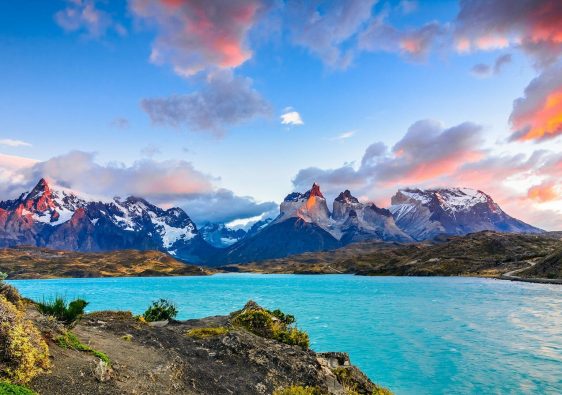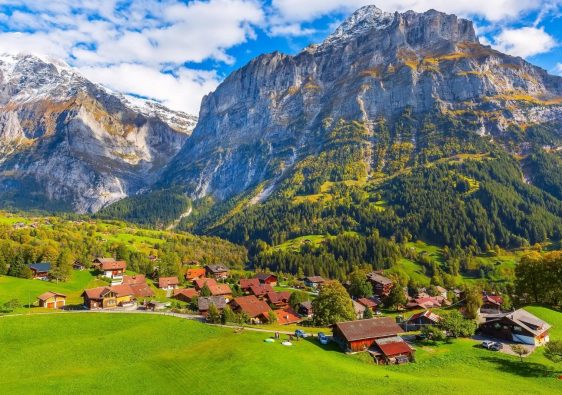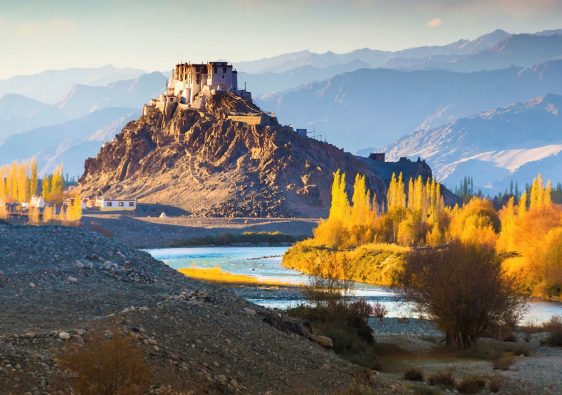Lapped in the eastern frontiers of the Himalayan mountain range that is one of the most scenic hill stations in North-East India, Kohima is marked by an unhurried pace of life, calm and serene environs and fresh, unpolluted air, which make a welcome change for a jaded city dweller.
A typical Naga town, it depicts the exotic tribal culture of the northeast and offers a panoramic view of the neighboring hills.
Standing tall at an elevation of 1500 meters, Kohima was primarily highlighted on India Tourism map during the World War 2 for the decisive battle that was fought here between India, and Japan.
But Kohima has a lot to do when you go there for family vacation, honeymoon tour, or adventure trips.
Here are the 8 Amazing Places To Visit In Kohima:
1. Dzukou Valley
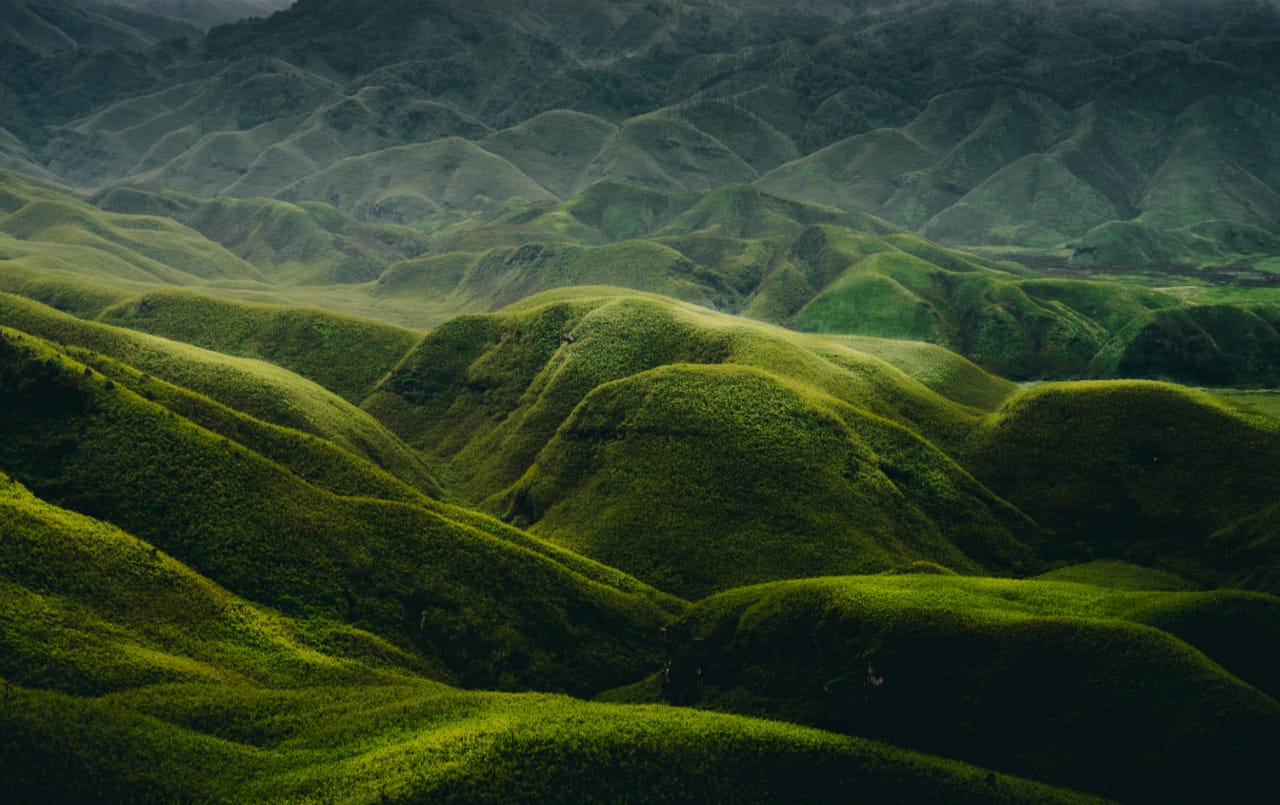
Being well known for its natural environment, seasonal flowers, and flora & fauna and situated at an altitude of 2452 m above sea level, Dzukou Valley is a valley located at the borders of the states of Nagaland and Manipur.
Mostly visited during the full bloom season, the beauty of the valley is best appreciated when lilies in white and pink, aconitums, euphorbias, and hundreds of other botanical species in varied colors adorn the valley in the monsoon.
But in summer, vivid green hillocks pave the way for blue mountaintops, and bright flowers wave in the winds amongst the tall grasses.
During winter, temperatures drop far lower than one would expect in such tropical states where Dzukou Valley freezes, sometimes covered in white snow.
So, walk on the multicolored carpets of blooming flowers. Take a look at the smiling Dzuko lily which can be spotted only in the Dzukou Valley. This valley is an undiscovered gem that is known only by the local people so don’t miss exploring this hidden gem of Kohima.
2. The Japfu Peak
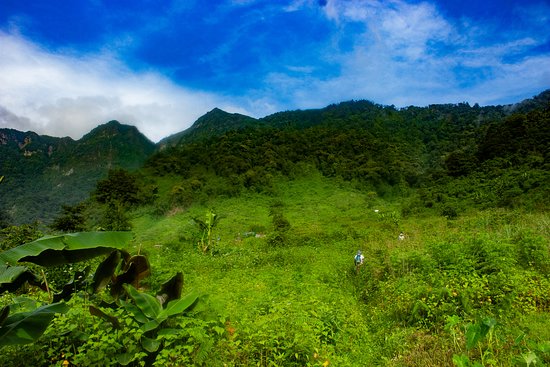
Situated at 15 km south of Kohima, the Japfu Peak is one of the most important tourist attractions in Nagaland and is part of the landscape, which has given Nagaland the name “Switzerland of the East” which is one of the most important places to visit near Kohima and over the years the Japfu Peak has become one of the popular tourist spots in the entire North East.
But this peak is a paradise for trekking lovers that attracts numerous travelers throughout the year. Do you know? The trekking experience up to Japfu Peak is a breathtaking experience that you gotta try at least once when you’re in Kohima.
Also, being the second-highest peak in Nagaland, Japfu Peak provides a beautiful view of the Dzukou Valley that is affluent with lush green and thick vegetation that offers one of the most mesmerizing treks with the backdrop of snow-clad Himalayas.
With mist-covered forests and splendid scenic beauty, Japfu Peak is one of the must-visit places in Kohima. I am sure you don’t know about this but this valley is considered to be the ‘Valley of flowers’ in the North East and is visited mostly during the full bloom and is considered to be the base of the crater of an old volcano.
So now, you gotta need to add this amazing place to your Kohima bucket list as the entire Japfu Peak is similar to a canvas of emeralds that is interlocked with the adjoining villages and cities – the view from a significant height is worth a capture for all nature lovers. Trust me, you are not gonna regret it.
3. Jotsoma Village

Jotsoma Village is a scenic spot nestled in the hills of Kohima. To get acquainted with the beauty of Nagaland, hiking to this village is absolutely breathtaking and essential for you to be introduced to the beauty of Nagaland.
Jotsoma is a quaint place where you can visit Doordarshan Kendra, a reservoir and the famous Mount Pulibadze.
Do you know? Jotsoma Village has a population of not more than 3000 people.
So, with a population not exceeding 3000 people, it is one of most quiet places in Nagaland that I will definitely urge you to travel there whenever you are traveling to Kohima and especially if you are looking for some peace of mind. Don’t miss visiting this amazing and peaceful village of Kohima, Nagaland.
Check Out The 7 Charming Lakes That You Must Visit In Sikkim
4. Dzuleke
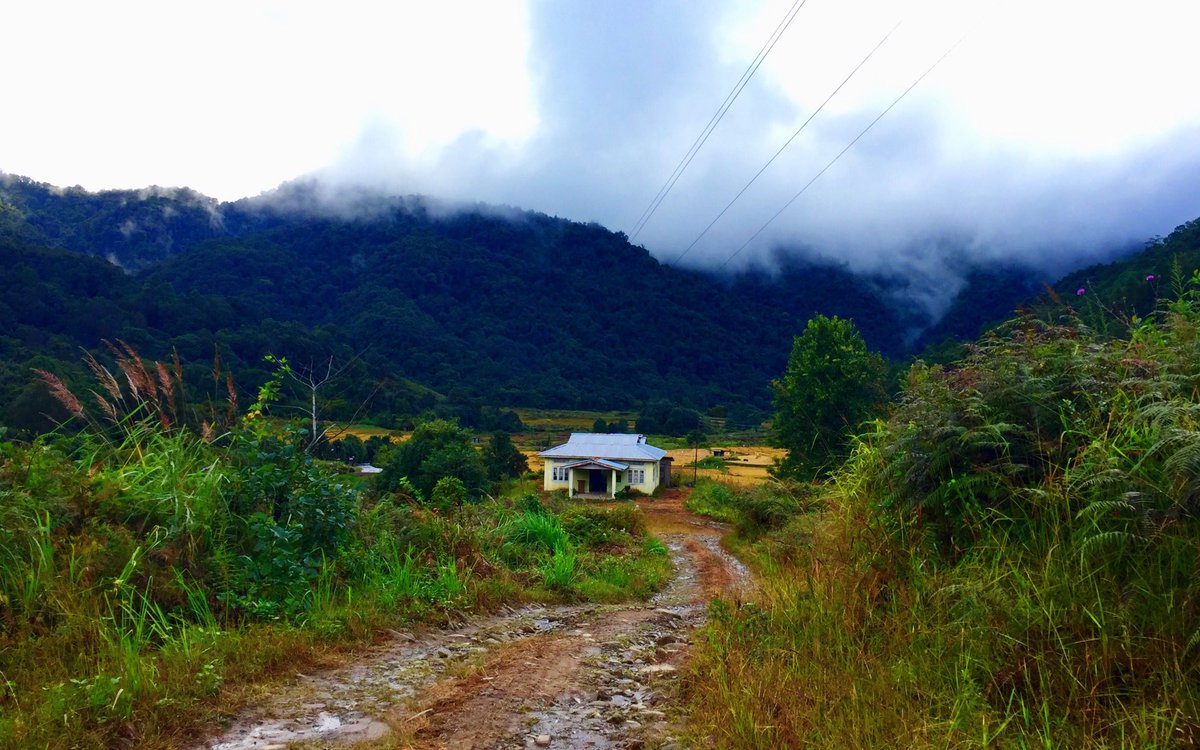
Dzuleke, just about 10km from Khonoma which is the first ‘green village’ of India and about 40km from Kohima is a treat to the eyes of you.
The village gets its name from the river Dzuleke that, during its course, goes underground once it reaches Dzuleke. ‘Dzu’ means water and ‘leke’ means underground in the local language.
It has the sparsest population of about 200 households, mostly inhabited by the Angamis – one of the major tribes of Nagaland. Dzuleke is a delight to visit because of its serene beauty. But it is one of the most underrated places to visit in Nagaland.
Now, having gotten its name from river Dzuleke, there’s not just gorgeous flora and fauna but also incredible wildlife, especially ever since this hunting village banned hunting to protect wildlife.
So, don’t be surprised if you spot animals such as the stump-tailed macaque, barking deer, mountain bamboo partridge and even Blythe’s tragopan – the state bird of Nagaland. Don’t forget to explore Dzuleke.
5. Shilloi Lake
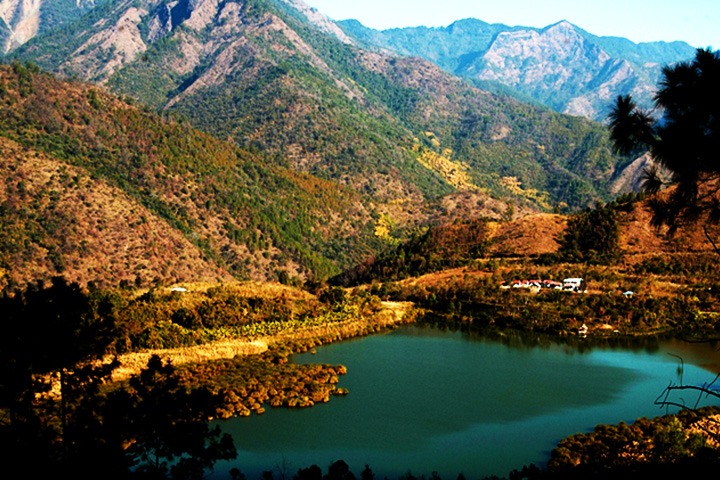
Located in Lutsam village of Phokhungri area under the Meluri sub-division in Phek district, A beautiful foot shaped lake in the heart of the Patkai range of Nagaland, Shilloi Lake is a very picturesque destination with verdant valley surrounding it from all sides.
The winding road down to the lake from Washelo, through the slopes of the rocky hills presents a majestic sight. Shilloi Lake lies on the lower slopes of the hill ranges running along the Myanmar ridges. It is surrounded by tall, striking and attractive hills.
But the lake is considered very important by the folks of Lutsam village as it is believed that the spirit of a holy child rests in the bottom of the lake. It is one of the reasons why no one fishes or uses the lake water for drinking and irrigation.
If you are in Nagaland and you have not been to Shilloi Lake, you have missed out on experiencing the beauty of the largest natural lake in Nagaland. So, don’t miss it.
6. Khonoma Village
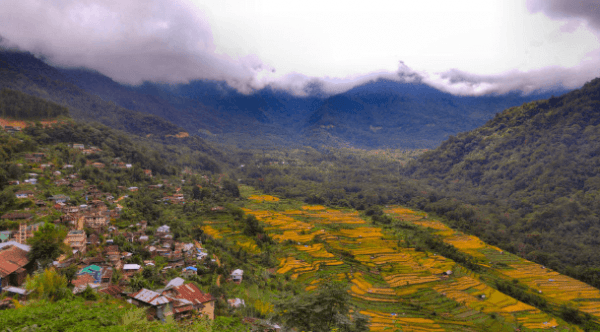
Famed as Asia’s first green village, the centuries-old Khonoma Village is a great place to introduce yourself to the Naga lifestyle and unwind in the lap of nature.
Nestled at the base of the mountains of Nagaland you would pass through misty valleys, gently sloping hillocks, terraced farms, and an air of a strong bond with nature.
A visit to the village offers you an opportunity to interact with the people of the local Angami tribe and learn about how they have succeeded in creating a more conserved and sustainable ecosystem for themselves. The village is also known for being one of the cleanest villages of Nagaland.
You can also enjoy birdwatching and trekking during your visit to Khonoma Village that you would not like to miss it at any cost.
7. Kohima War Cemetery
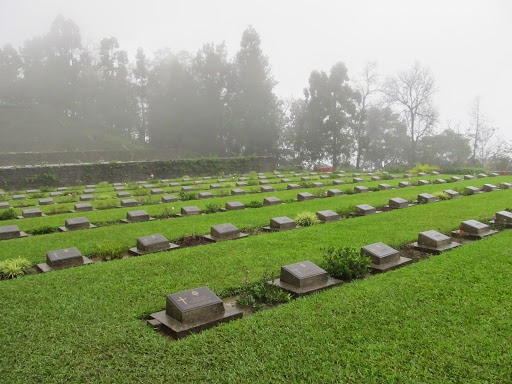
Kohima War Cemetery is a memorial dedicated to soldiers of the 2nd British Division of the Allied Forces who died in the Second World War at Kohima, the capital of Nagaland, India, in April 1944.
The soldiers died on the battleground of Garrison Hill in the tennis court area of the Deputy Commissioner’s residence. This spot is a must-visit as it tells people more about our ancient history. To prevent the Burma attack, the Japanese army attacked the British army who were then stationed at North East India in March 1944. The cemetery is well kept with lush green, mowed lawns and well groomed flowers.
The epitaph on the cemetery wall reads ? When you go home, tell them of us and say That for their tomorrow, we gave our today….. ?
On the 18 plots of the cemetery, there are 1421 slabs erected in memory of soldiers who were killed in the battle of Kohima. The soldiers were from UK, Japan, East and West Africa and Burma.
A visit to the cemetery leaves you absolutely fascinated by the courageous tales of the martyrs who rest here.
8. Tuophema Village
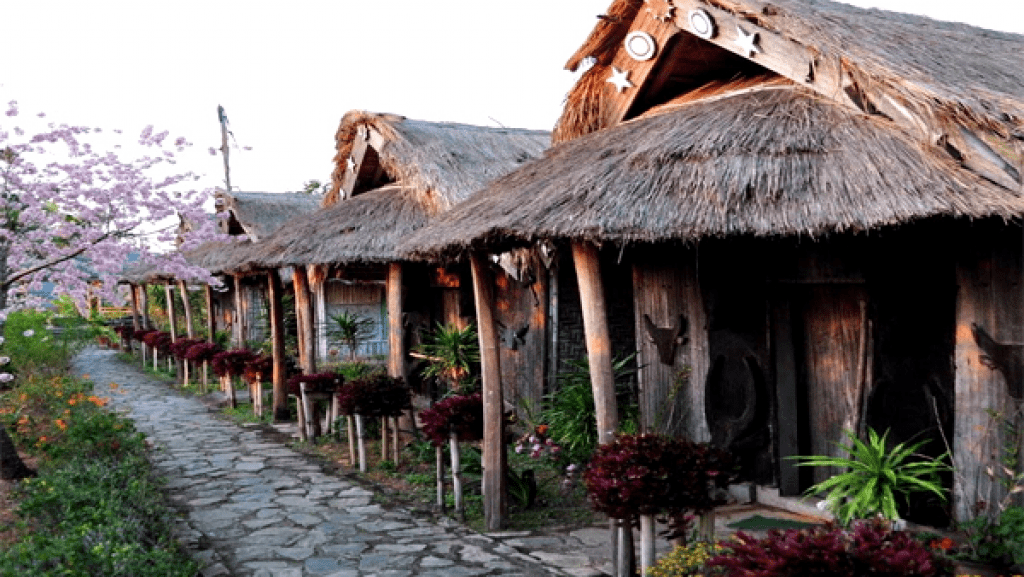
The ride from Kohima to Botsa, and further up the hill to Tuophema Village, is only one and a half hours long, but it feels like a world apart from the uphill ascent from Dimapur to Kohima.
Tuophema Tourist Village is located 41 km from Kohima has been modelled around the ethnic tourism model where you will be offered modern and hygienic accommodation in traditional huts in an ethnic setting, and can experience the local culture and cuisine.
Situated on a gentle hillock with a panoramic view of the surrounding valleys, Tuophema offers a chance to stay in quaint little huts, enjoy pleasant evenings around bonfires with cultural dances just adding to rustic feel of the entire place.
The scenic locales offer some of the best photo opportunities there are and the Naga tradition of serving local dishes with homemade rice beer is just super! Don’t miss it.
If you liked this article, then please subscribe to my YouTube Channel for Travel Adventures. You can also follow my adventures on Twitter and Instagram.

